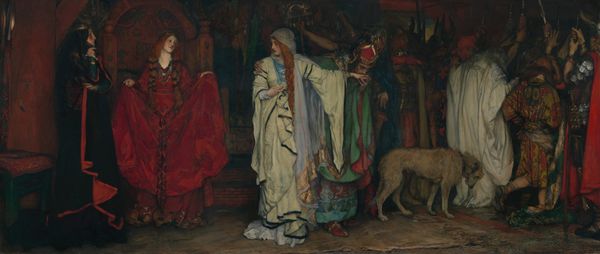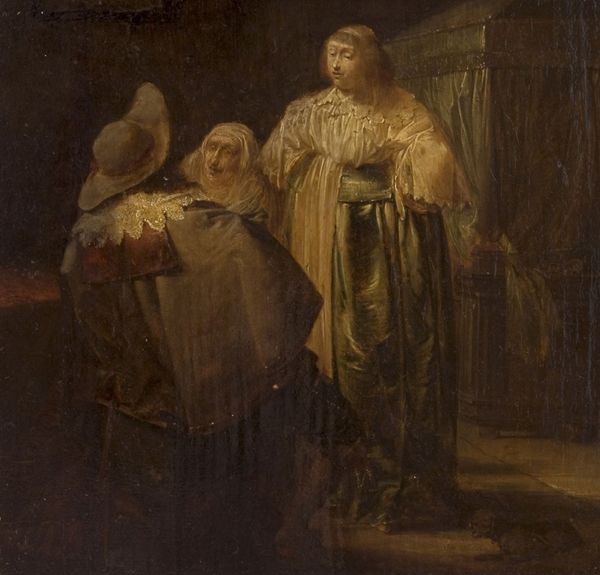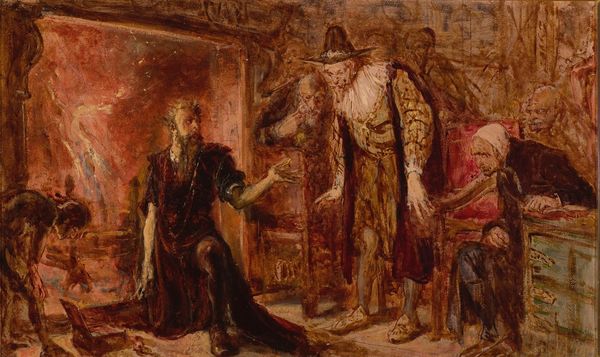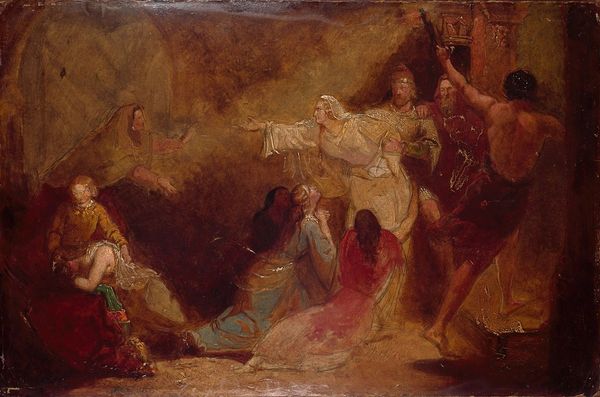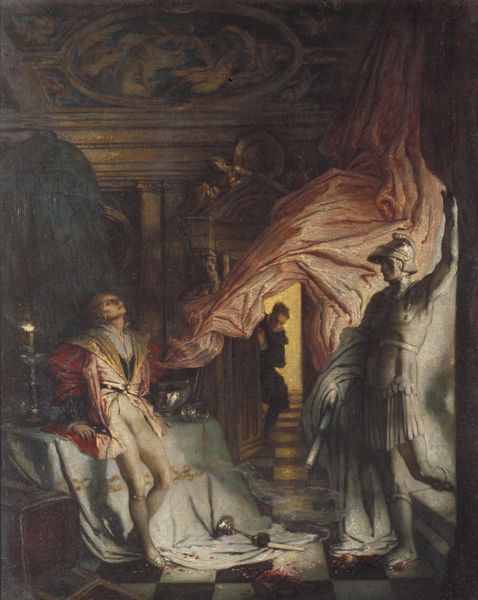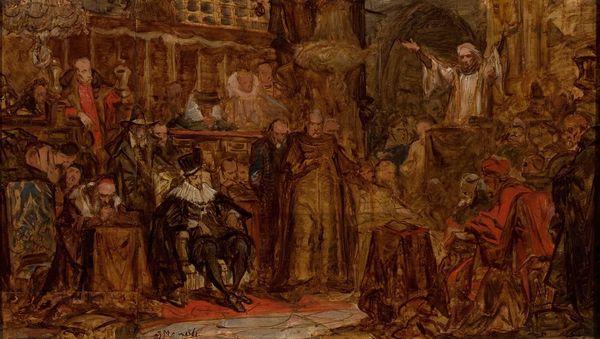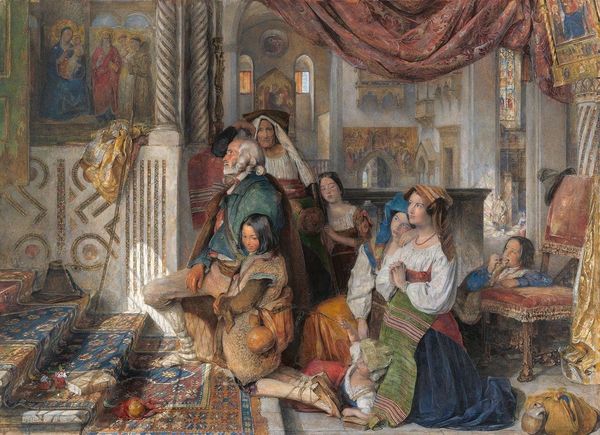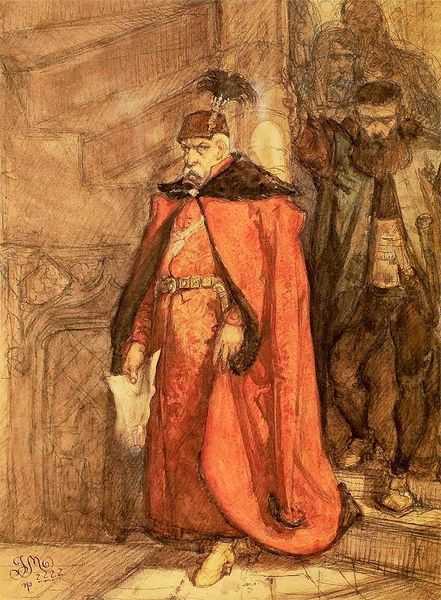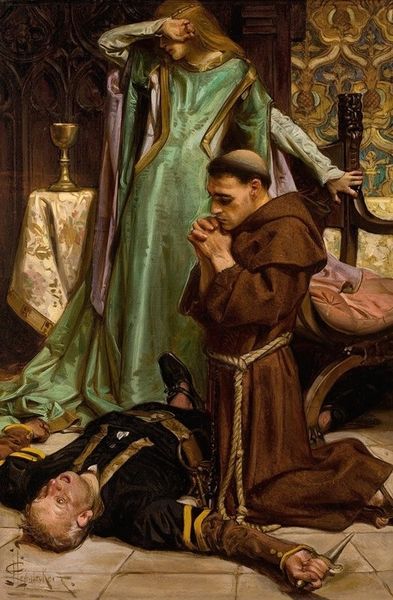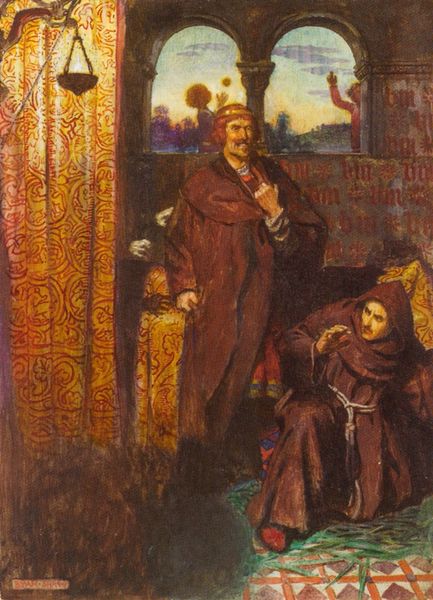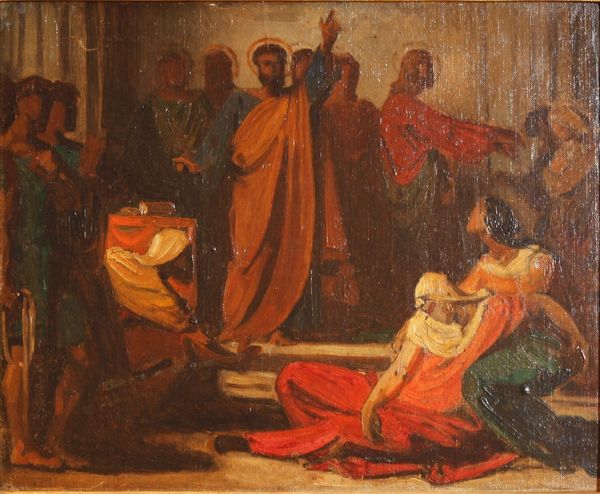
Copyright: Public Domain: Artvee
Editor: This is Edwin Austin Abbey’s “Troilus and Cressida; Before Agamemnon’s Tent,” an oil painting from 1906. It feels quite theatrical, like a stage play. I'm struck by the dramatic tension in the figures’ postures. What do you see in this piece from a historical perspective? Curator: It’s fascinating to consider how Abbey’s interpretation of Shakespeare, a romanticized vision of the Trojan War, reflects anxieties of early 20th-century Britain. Notice the costumes – how do they echo both historical depictions and contemporary stage designs? Think about the socio-political climate: The British Empire was at its peak, yet faced challenges to its power. Is it possible that Abbey uses the doomed love story to subtly comment on the fragility of power and inevitable decline? Editor: That’s a great point. The almost melancholic mood could definitely mirror that sense of unease. But how much would the average gallery visitor at the time really pick up on that subtle critique? Curator: It’s not about conscious reception, but the overall atmosphere the piece creates. The museum space itself—its architecture, the arrangement of works—further shapes the meaning. A painting like this wouldn't just be viewed aesthetically, but experienced within a whole framework of national identity and cultural values promoted by institutions. How might such a scene fuel notions of bravery or even regret relating to colonial pursuits, shaping a modern hero or citizen? Editor: So, the painting, the artist, the institution and the viewer all play roles in shaping meaning in that period... Very insightful. Thank you! Curator: Exactly! Considering that interplay truly enriches our understanding of any work of art.
Comments
No comments
Be the first to comment and join the conversation on the ultimate creative platform.
